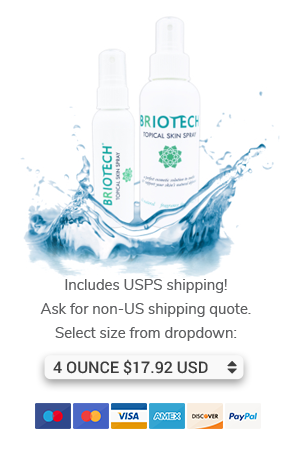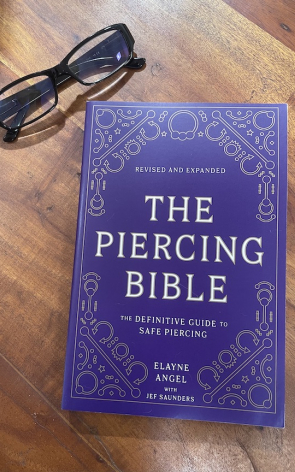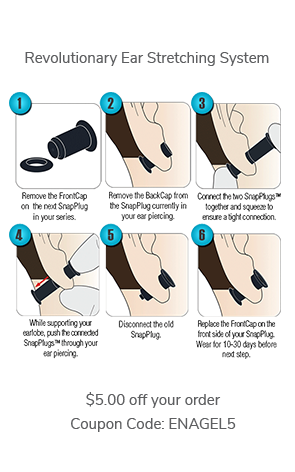Liz wrote back with some additional questions:
Elayne -
Thanks so much for responding so quickly! I have your book on pre-order with Amazon, and look forward to devouring it!I really hesitate to try any kind of steel - I have had my ears pierced since I was 8, and to this day can't get near anything less than 14k (other than sterling) in my ears without major irritation and discharge, even bleeding. My wedding ring is white gold, and even after wearing it for 14 years, I still sometimes get a rashy irritation under the band from the nickel in the alloy. Can you tell me any more about the alloy used in 14k that makes it piercing compatible? Even the gold earrings I wear turn red over time where they contact my skin - presumably from my body oxidizing the trace copper in the yellow gold alloy. Who knows. Obviously something I need to do more research on - I had no gold would pose its own complications.
I hope the attached pics are ok - the q-tip was a bit tricky, and as it is a self-portrait, kind of blurry. It's a standard generic q-tip. If you need better detail or a different angle or something, I can try to re-do the photos later this weekend (if I can get my toddler to nap).
Thanks again - Liz
Liz,
I know my book will provide you with a great deal of information that will prove most helpful to you. There is a big chapter on jewelry and you will learn all about the different materials. For healing, you may decide to go with titanium or even bioplast or PTFE (inert plastics).
Implant grade steel and titanium have alloys that meet certain standards, but gold does not have an implant designation. Gold alloys are proprietary mixes, so there are no assurances like the "mill certificates" provided by manufacturers of implant grade steel and titanium. You'd be safer with titanium which does not contain ANY nickel. Again--lots of info in the book about all of your questions.
Yes, you can definitely get a rash from white gold unless it is specifically alloyed to be nickel-free. White gold is a common offender. In quality body jewelry, they often use palladium for whiteness, which is in the platinum family, instead of nickel. It is inert and well tolerated by the body.
I'm limited in my ability to evaluate you from here without being able to examine you in person, but your tissue appears somewhat borderline. There may be sufficient hood to make the piercing safely if the receiving tube is placed properly during the procedure. It will be very important to go to a highly qualified professional.
If you put the swab in place but try to draw the skin down to cover the entire tip, can you do that? (It is easier to push the tissue down rather than try to pull it.)
P.S. If you would like to see me perform a number of VCH piercings, you can go to this page. It shows in great detail exactly how it should be done and where the piercing should be placed. (Once your piercer marks you, if it doesn't look like it does in the video--it is not too late to request a more appropriate placement, or if necessary, call it off.)
Let me know if you have any questions left once you read my book!
Elayne





